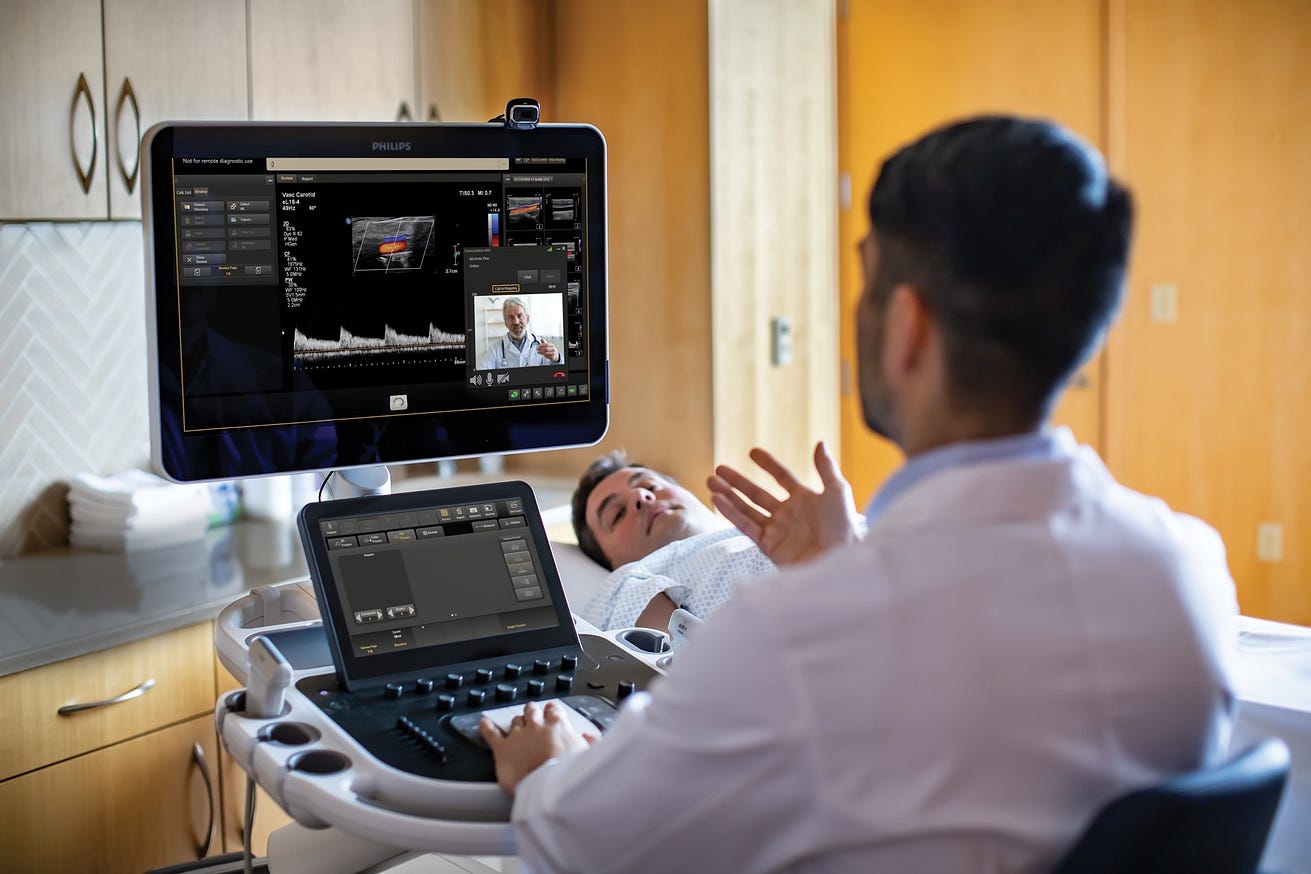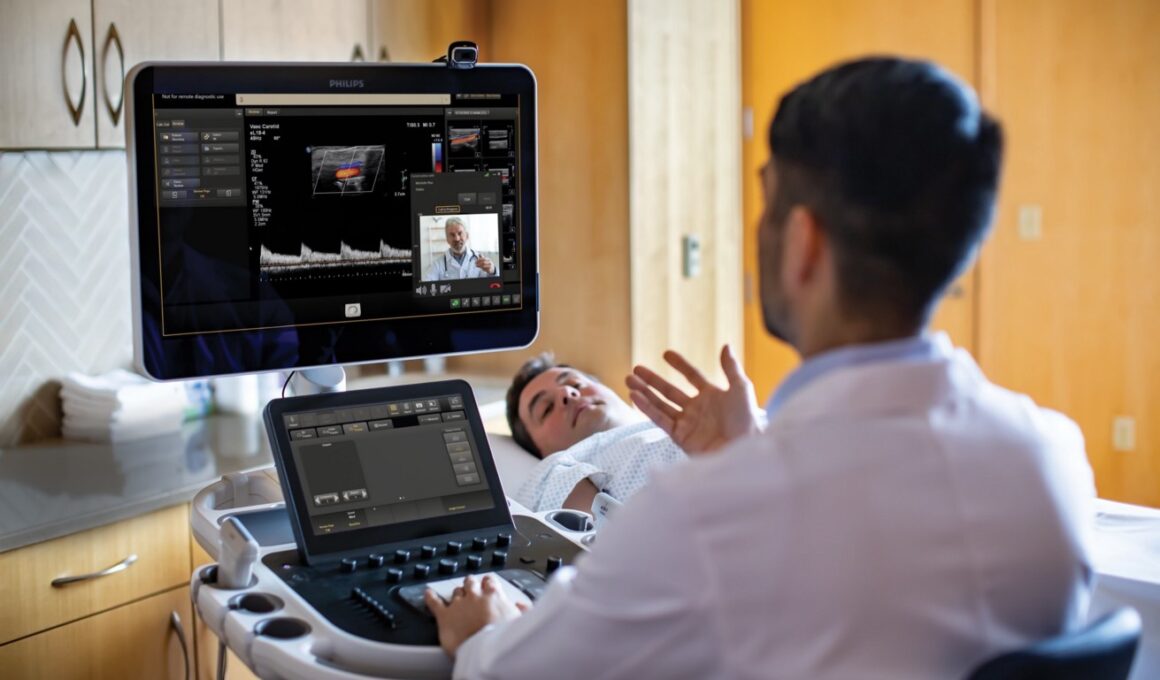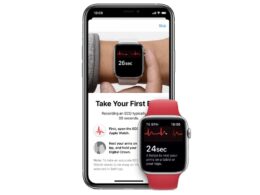health transformation
advisory institute
Joaquim Cardoso MSc
Founder and Senior Advisor
January 28, 2023
KEY MESSAGES:
KEY MESSAGES:
- Medical workers are under increasing pressure to do more with less and global healthcare is facing serious staff shortages.
- The adoption of innovative digital technologies can help address these issues and improve care for all.
- As technologies develop, we must continue to rethink the delivery of healthcare and help health systems become more agile, supported by technology, so they can continue to adapt and address challenges.
- The goal must be to always deliver people-centred care, so patients get the care they need, when they need it, despite any challenges that may arise.
- To achieve this, both patients and healthcare professionals must remain at the heart of healthcare.
DEEP DIVE

How tech can tackle healthcare workloads and staff shortages
Weforum, Davos 2023
Roy Jakobs, CEO, Philips
Everywhere I turn I see and hear two things:
firstly, doctors and nurses are under increasing pressure to do more with less and …
… secondly, healthcare is facing serious staff shortages.
If these two points are not urgently addressed, it’s going to further affect the delivery of care as we know it and even impact entire communities.
As the new CEO of Philips — a health technology company — I want to highlight some of the factors contributing to increasing workloads and staff shortages.
Then I want to show how the adoption of innovative digital technologies can help address these issues and improve care for all.
First, let’s look at what’s contributing to the increasing workload for care providers and staff shortages.
There are several issues at play. COVID-19 is the obvious one.
Over the last few years, responding to the pandemic has increased workloads and put immense pressure on doctors and nurses, partly because it has created huge patient backlogs, testing the limits of healthcare systems worldwide.
As we continue to emerge from the pandemic, many of the doctors and nurses I talk to say they are increasingly overwhelmed for many reasons.
They share concerns about the rise in patient numbers, caused by backlogs and also by ageing populations and the rise in chronic diseases.
They also share stories about the increasing complexity in healthcare, shrinking budgets and rising costs, plus the time-consuming administrative work they must contend with and how it reduces the time they have to provide patients with the best care.
Each one of these issues compounds the others.
They share concerns about the rise in patient numbers, caused by backlogs and also by ageing populations and the rise in chronic diseases.
For some, the burden has become too great. Globally, we see reports that some doctors and nurses are either leaving or considering leaving healthcare.
This contributes to a rise in the number of vacancies and workforce shortages, as seen in 2022 by the NHS in England, which reported more than 110,000 unfilled job posts, …
… and in the United States, where it was reported at one stage that 8% of all jobs in healthcare were open at a time when there were 400,000 fewer healthcare workers compared to before the pandemic.
This contributes to a rise in the number of vacancies and workforce shortages, as seen in 2022 by the NHS in England, which reported more than 110,000 unfilled job posts, …
… and in the United States, where it was reported at one stage that 8% of all jobs in healthcare were open at a time when there were 400,000 fewer healthcare workers compared to before the pandemic.
It’s the same story in many countries, including the Netherlands, which is short, by some reports, of about 80,000 care workers.
And the shortage is set to continue. The World Health Organization predicts that the global healthcare workforce will be short of around 10 million people in 2030.
It’s no wonder that staff satisfaction and retention are top priorities for healthcare leaders, as noted in the Philips Future Health Index 2022 report.
Since taking on the CEO role, I’ve talked with many healthcare professionals to better understand the challenges they face, as well as the challenges facing the health systems they work in.

These problems must be confronted from a range of angles, by, for example, looking at ways to better nurture staff and improve their experience.
- 1.Adopting digital technologies is one part of the solution and it’s something I want to raise awareness about, in and outside of healthcare circles
- 1.1 Unlocking data-rich insights to improve healthcare
- 1.2 Monitoring patients across multiple locations
1.Adopting digital technologies is one part of the solution and it’s something I want to raise awareness about, in and outside of healthcare circles.
Just as new technologies have improved many other parts of our lives and provided solutions to difficult problems, they offer a world of possibilities in healthcare, which remain largely untapped.
Ultimately, the widespread adoption of digital technologies can help give people everywhere greater access to better, more sustainable and more convenient care and improve the patient and staff experience.
But I’m also conscious that this must be done in a way that works within the existing infrastructure and is supported by the healthcare professionals using these technologies.
Let me give you some examples:
1.1 Unlocking data-rich insights to improve healthcare
Healthcare providers are now flooded with data. It’s never been easier to capture reams of information. But the benefits of this are only realized when it provides insights that become actionable.
This is where digital technologies come in.
- Today, artificial intelligence,
- the Internet of Things and
- cloud-based digital platforms can help doctors and nurses interpret patient data and provide actionable insights.
These insights can help healthcare professionals to, for example, better allocate resources and respond quickly to changes in a patient’s condition.
This is the huge potential of the digital transformation of care.
1.2 Monitoring patients across multiple locations
As the pressure increases to connect acute care across different settings, it’s now possible to monitor patients from a central location, with, for example, tele-ICUs (intensive care units) led by an intensivist team.
This team provides critical care resources to those patients who need them most, across different hospital locations.
Such technologies enlarge the reach and boost the impact and efficiency of healthcare professionals, from nurses to radiologists, pathologists and others.
They give these same professionals quality assurance by enabling peer-to-peer coaching, oversight and the ability to intervene with patients when necessary.
Such technologies enlarge the reach and boost the impact and efficiency of healthcare professionals, from nurses to radiologists, pathologists and others.

2.Caring for patients in the hospital and at home
At Philips, we like to say that the smart hospital of the future is one without walls.
Virtual care, for instance, already enables care to move beyond the hospital.
The pandemic drove this shift out of the necessity of patients to be able to access care during COVID-19 lockdowns.
Perhaps you accessed virtual care during the height of the pandemic and continue to do so.
The greater adoption of virtual care can continue to extend specialist care outside of the hospital and even into the home.
It can also be more convenient for many patients, such as those with chronic diseases, and it reduces the burden on busy hospitals and healthcare professionals.
Virtual care, for instance, already enables care to move beyond the hospital. The greater adoption of virtual care can continue to extend specialist care outside of the hospital and even into the home.
It can also be more convenient for many patients, such as those with chronic diseases, and it reduces the burden on busy hospitals and healthcare professionals.
These are just a few examples of how digital technologies can help address increasing workloads for doctors and nurses and staff shortages.
It comes down to the interplay of technologies and how they connect and communicate with each other, integrate within existing infrastructures and help care providers.
As technologies develop, we must continue to rethink the delivery of healthcare and help health systems become more agile, supported by technology, so they can continue to adapt and address challenges.
As technologies develop, we must continue to rethink the delivery of healthcare and help health systems become more agile, supported by technology, so they can continue to adapt and address challenges.
The goal must be to always deliver people-centred care, so patients get the care they need, when they need it, despite any challenges that may arise.
This means engaging and empowering doctors and nurses and giving them access to intuitive technologies that reduce workload pressures and truly help them to deliver the best possible care.
To achieve this, both patients and healthcare professionals must remain at the heart of healthcare.
To achieve this, both patients and healthcare professionals must remain at the heart of healthcare.
Originally published at https://www.weforum.org on January 17, 2023.












